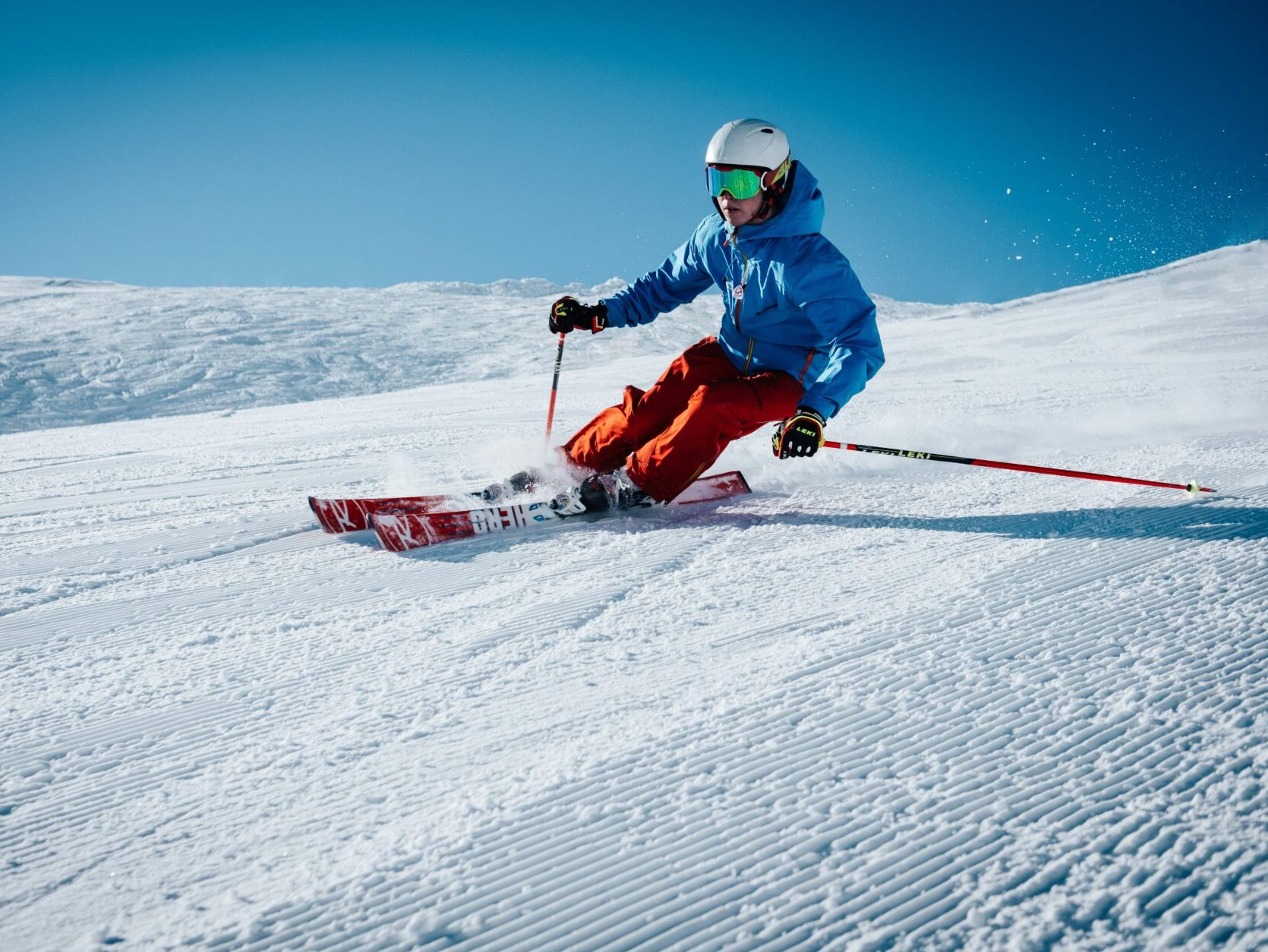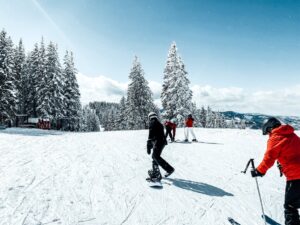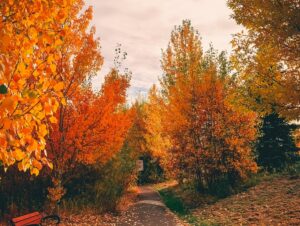Colorado is home to more than two dozen ski areas, each with its own personality. While world-famous resorts like Aspen, Vail, and Breckenridge often grab the headlines, there’s another set of mountains that locals and newcomers love for their accessibility, affordability, and unique character. From family-friendly terrain to legendary powder stashes, these resorts prove that skiing in Colorado isn’t limited to the marquee names. For newcomers relocating to Denver or the Front Range, these resorts are especially appealing because they’re close to home, easier on the wallet, and deliver authentic mountain experiences without the heavy crowds. This guide explores some of Colorado’s beloved ski areas close to Denver and beyond the icons—each with its own story and flavor.
Loveland Ski Area
Located just 53 miles from Denver, Loveland Ski Area is one of the ski areas close to Denver and is often the first choice for locals who want to maximize time on the slopes. At nearly 13,000 feet in elevation, Loveland is one of the highest ski areas in North America, which helps it receive an average of over 400 inches of snow annually. With 1,800 acres of terrain and a season that often runs from October into May, Loveland offers an authentic ski experience without the long lift lines of I-70 neighbors.
Loveland is known for its affordability and convenience. It lacks the large, commercial village of bigger resorts, but that’s part of its appeal. Families, day-trippers, and season pass holders come for the skiing, not the shopping. Beginners and intermediates enjoy wide groomers off the Loveland Valley lifts, while advanced skiers head to the Ridge for open bowls and hike-to terrain with stunning views of the Continental Divide.
The vibe is friendly, laid-back, and deeply local. Parking is free and close to the lifts, and the base lodge offers casual dining without resort prices. For newcomers to Denver, Loveland is often the best introduction to Colorado skiing: close, affordable, and big enough to offer a taste of high-alpine adventure.
Copper Mountain
Copper Mountain sits midway between Denver and Vail and has built its reputation on natural terrain separation. Beginners gravitate toward the west side, intermediates fill the center, and experts head east. With more than 2,500 acres, Copper ensures skiers of different levels can explore without overlap, making it one of the best-designed resorts in Colorado.
The mountain is also home to Woodward Copper, an action-sports training facility, and is regularly used by the U.S. Ski Team for training. Terrain parks and halfpipes attract freestyle skiers and snowboarders, while advanced skiers love the steeps off Spaulding Bowl and Copper Bowl. Families benefit from well-laid-out beginner terrain, ski schools, and the compact village with restaurants, shops, and après-ski options.
Copper’s location right off I-70 makes it highly accessible, yet it retains a more relaxed atmosphere than some of its higher-profile neighbors. It’s a resort that delivers both serious skiing and family-friendly fun, making it a strong choice for newcomers who want variety without feeling overwhelmed.
Keystone Resort
Keystone is one of the most family-focused resorts in Colorado, with a reputation for making skiing fun for kids and adults alike. Its Kidtopia program includes snow fort building, scavenger hunts, and themed activities that keep younger visitors entertained off the slopes. On the mountain, Keystone offers more than 3,000 acres across three peaks, with a mix of beginner, intermediate, and advanced terrain.
One of Keystone’s most distinctive features is its night skiing operation—the largest in Colorado. This allows skiers to extend their day well past sunset, an experience especially appealing to families or visitors making a quick weekend trip. For more adventurous skiers, Keystone also offers cat skiing to access untouched powder in its back bowls.
The base village is designed for convenience, with lodging, restaurants, and ice skating all within walking distance. With affordable lodging packages and a strong family orientation, Keystone is a natural fit for newcomers seeking a well-rounded ski resort where kids are just as catered to as adults.
Winter Park Resort
Just 67 miles from Denver, Winter Park is one of the state’s most historic ski areas, originally founded by the city of Denver in 1940. It has grown into a sprawling resort with more than 3,000 acres of diverse terrain, spread across seven distinct territories. This layout ensures that every type of skier finds their niche: gentle groomers, tree skiing, moguls, terrain parks, and the steep chutes of Mary Jane.
Mary Jane in particular has earned legendary status among advanced skiers for its challenging bumps and glades. Meanwhile, Winter Park’s beginner zones and ski schools make it approachable for newcomers. The resort also hosts adaptive skiing programs, reinforcing its inclusive reputation.
Accessibility is another big draw. The Winter Park Express train runs directly from Denver’s Union Station to the resort, making it one of the easiest mountains to reach without a car. The town of Winter Park adds to the charm with restaurants, shops, and lodging that balance mountain-town authenticity with modern amenities. For newcomers, Winter Park strikes an appealing balance: close to Denver, diverse in terrain, and steeped in Colorado ski culture.
Arapahoe Basin (A-Basin)
Arapahoe Basin, affectionately known as A-Basin, is a cult favorite among Coloradans. At elevations up to 13,050 feet, it often boasts the longest ski season in the state—sometimes running from October into June. While its 1,400 acres are smaller compared to mega-resorts, the terrain is steep, challenging, and filled with character.
A-Basin is best known for expert terrain like the East Wall, which offers some of the most demanding inbounds skiing in Colorado. But there’s also a healthy mix of intermediate trails and mellow groomers for those looking to build confidence. Snowfall averages around 350 inches a year, and the high elevation helps preserve snow quality deep into spring.
Off the slopes, A-Basin is as unpretentious as it gets. There’s no fancy village—just a rustic base lodge and one of Colorado’s most famous après-ski traditions: The Beach. This parking-lot tailgate scene is legendary, with skiers grilling, socializing, and celebrating ski culture in its purest form. For newcomers, A-Basin offers a taste of Colorado’s authentic ski community. It’s raw, real, and all about the skiing.
Monarch Mountain
Tucked away in southern Colorado near Salida, Monarch Mountain is a small but mighty ski area that delivers authenticity and value. With around 800 acres of skiable terrain, Monarch relies entirely on natural snowfall, which averages more than 350 inches annually. This gives it a true old-school feel that appeals to those who want to escape the commercialism of larger resorts.
Monarch’s terrain mix is well balanced, with beginner and intermediate runs making up the majority, but also offering tree skiing and advanced terrain for thrill seekers. The resort also operates a snowcat program, allowing skiers to access thousands of additional acres of backcountry-style terrain.
Families and budget-conscious skiers appreciate Monarch’s affordability. In addition to being one of the ski areas close to Denver, lift tickets are typically far less expensive than big-name resorts, and the atmosphere is laid-back and welcoming. Crowds are minimal, lines are short, and parking is free—small touches that make a big difference. For newcomers seeking a relaxed and affordable introduction to Colorado skiing, Monarch provides a perfect balance of value, snow quality, and small-town hospitality.
Steamboat Springs (Ski Town, U.S.A.)
Steamboat Springs, nicknamed “Ski Town, U.S.A.,” is one of Colorado’s most beloved resorts. With nearly 3,000 acres of skiable terrain, Steamboat is best known for its signature “champagne powder,” a light, dry snow that draws skiers from around the world. The resort’s wide range of runs makes it accessible to beginners and experts alike, from gentle cruisers to challenging tree skiing and mogul fields.
Steamboat also has a rich Olympic legacy, having produced more winter Olympians than any other town in the United States. This heritage adds a unique sense of pride and history to the resort. For families, Steamboat offers excellent ski schools, kid-friendly programs, and a welcoming mountain-town atmosphere.
Beyond the slopes, the town of Steamboat Springs enhances the experience with its western charm. Hot springs, boutique shops, local restaurants, and a thriving arts scene provide plenty to do après-ski. Visitors can soak in natural mineral pools or explore the town’s cultural offerings, making Steamboat a true four-season destination.
For newcomers relocating to Colorado, Steamboat delivers a perfect mix of world-class skiing, authentic community, and western hospitality that stands apart from glitzier resorts.
Recap: Colorado’s Variety Runs Deep
For newcomers, the variety of Colorado’s ski resorts ensures there’s something for every lifestyle and budget. If you want quick day trips, ski areas close to Denver, such as Loveland and Winter Park are unbeatable. Families find Keystone and Copper Mountain especially welcoming, with programs designed around kids. Powder hunters gravitate to A-Basin and Monarch for their raw, authentic vibe, while Steamboat blends world-class snow with small-town western culture.
Together, these resorts highlight the depth of Colorado’s ski scene—proof that you don’t have to stick to the big names like Vail or Aspen to experience the best of the Rockies. Each mountain has its own story, community, and character, giving newcomers endless ways to explore and connect with Colorado’s alpine lifestyle. Whether you’re chasing convenience, affordability, or powder days, the state’s lesser-known resorts are every bit as rewarding as the icons.




